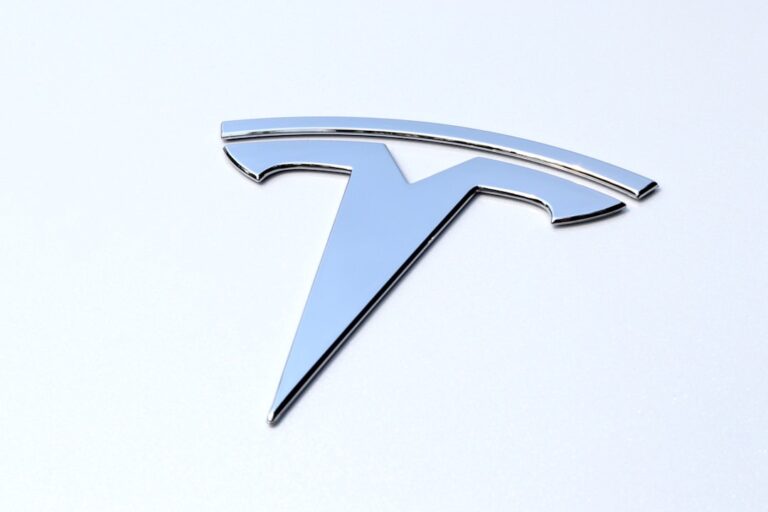
Tesla’s stock performance has been a focal point for investors and analysts alike, showcasing a remarkable trajectory that has captivated the financial world. Over the past few years, Tesla’s shares have experienced significant volatility, characterized by sharp rises and occasional dips. For instance, in 2020, the stock price surged dramatically, driven by a combination of strong sales figures, increased production capacity, and a growing acceptance of electric vehicles (EVs) in the mainstream market.
By the end of 2021, Tesla’s market capitalization had soared to over $1 trillion, making it one of the most valuable automakers globally. This meteoric rise was not merely a reflection of the company’s operational success but also a testament to the broader shift towards sustainable energy solutions. However, the stock’s performance has not been without its challenges.
In 2022 and early 2023, Tesla faced headwinds that led to fluctuations in its stock price. Factors such as supply chain disruptions, increased competition from traditional automakers entering the EV space, and macroeconomic conditions like inflation and rising interest rates contributed to investor uncertainty. Despite these challenges, Tesla’s stock has shown resilience, often rebounding after dips as investors remain optimistic about the company’s long-term growth potential.
The volatility of Tesla’s stock is emblematic of the broader tech and automotive sectors, where rapid innovation and changing consumer preferences can lead to significant price swings.
Key Takeaways
- Tesla’s stock performance has been volatile, with significant fluctuations in value over the past year.
- Despite the volatility, Tesla has reported strong financial results and revenue growth, driven by increasing demand for its electric vehicles.
- The company has managed its debt and cash flow effectively, with a focus on reducing its long-term debt and improving its cash position.
- Tesla has made strategic investments and acquisitions in technology and manufacturing to support its long-term growth and innovation.
- Analysts have mixed recommendations and ratings for Tesla’s stock, reflecting differing opinions on the company’s future prospects and valuation.
Financial Results and Revenue
Revenue Growth and Expansion
In its most recent quarterly earnings report, Tesla announced revenues exceeding $24 billion, marking a substantial increase compared to the previous year. This growth can be attributed to several factors, including the expansion of production facilities, particularly in Gigafactories located in Texas and Berlin, which have significantly boosted output capabilities.
New Models and Revenue Diversification
The introduction of new models, such as the Cybertruck and updates to existing models like the Model S and Model 3, has also played a crucial role in driving sales. Moreover, Tesla’s revenue diversification is noteworthy. While vehicle sales remain the primary revenue driver, the company has increasingly capitalized on ancillary services such as energy storage solutions and solar products.
Energy Segment Growth and Sustainability
In recent quarters, Tesla’s energy segment has shown promising growth, contributing to overall revenue and enhancing the company’s position in the renewable energy market. This diversification strategy not only mitigates risks associated with reliance on vehicle sales but also aligns with Tesla’s mission to accelerate the world’s transition to sustainable energy.
Debt and Cash Flow

Tesla’s approach to debt management and cash flow generation has evolved significantly as the company has matured. Historically, Tesla operated with a considerable amount of debt, primarily due to its aggressive expansion strategy and capital-intensive nature of manufacturing electric vehicles. However, recent financial reports indicate a shift towards a more favorable debt profile.
As of late 2023, Tesla has managed to reduce its debt levels while simultaneously increasing its cash reserves. This improvement is largely attributed to strong operational cash flow generated from vehicle sales and cost management initiatives that have enhanced profitability. The company’s cash flow situation is particularly noteworthy.
In recent quarters, Tesla has reported positive free cash flow, allowing it to reinvest in research and development, expand production capabilities, and pursue strategic initiatives without relying heavily on external financing. This financial flexibility positions Tesla well for future growth opportunities and provides a buffer against potential economic downturns. The ability to generate consistent cash flow is critical for sustaining operations and funding innovation in an industry characterized by rapid technological advancements.
Investments and Acquisitions
| Company | Investment/Acquisition | Amount | Date |
|---|---|---|---|
| Acquisition | Fitbit | 2020-01-14 | |
| Microsoft | Investment | Zoom | 2018-01-01 |
| Acquisition | 2014-02-19 |
Tesla’s investment strategy reflects its commitment to innovation and market leadership in the electric vehicle sector. The company has made significant investments in expanding its manufacturing capabilities, with Gigafactories playing a central role in this strategy. The Gigafactory in Austin, Texas, for example, represents a multi-billion-dollar investment aimed at increasing production capacity for both vehicles and battery cells.
This facility is expected to play a pivotal role in meeting growing demand for Tesla’s products while also reducing production costs through economies of scale. In addition to manufacturing investments, Tesla has also pursued strategic acquisitions that align with its long-term vision. One notable acquisition was that of Maxwell Technologies in 2019, which focused on advanced battery technology.
This acquisition aimed to enhance Tesla’s battery performance and reduce costs, ultimately contributing to improved vehicle range and efficiency. Such strategic moves underscore Tesla’s proactive approach to securing technological advancements that can provide a competitive edge in an increasingly crowded market.
Analysts’ Recommendations and Ratings
The opinions of financial analysts regarding Tesla’s stock are varied and often reflect broader market sentiments about the electric vehicle industry. Many analysts have expressed bullish views on Tesla’s long-term prospects, citing its strong brand recognition, innovative technology, and expanding global footprint as key factors driving future growth. For instance, several analysts have set price targets significantly above the current trading levels, reflecting confidence in Tesla’s ability to capture market share as demand for electric vehicles continues to rise.
Conversely, some analysts have raised concerns about potential risks associated with Tesla’s valuation levels and competitive pressures from both established automakers and new entrants into the EV market. These concerns often stem from the perception that Tesla’s stock may be overvalued relative to traditional automotive metrics such as price-to-earnings ratios. As a result, some analysts have issued cautious ratings or hold recommendations, advising investors to consider potential volatility in the stock price as competition intensifies.
CEO Elon Musk’s Financial Moves

Stock Sales and Personal Investments
One notable aspect of Musk’s financial strategy is his approach to stock sales and personal investments in Tesla. Over the years, he has sold portions of his shares for various reasons, including funding other ventures like SpaceX and personal expenses. These sales often lead to fluctuations in Tesla’s stock price as investors react to changes in Musk’s ownership stake.
Influence on Investor Sentiment
Musk’s public statements and social media presence can significantly influence investor sentiment. His tweets about Tesla’s performance or future plans often lead to immediate reactions in the stock market. For instance, announcements regarding new product launches or updates on production timelines can result in sharp movements in Tesla’s share price.
Leadership Decisions and Investor Confidence
This dynamic underscores the unique relationship between Musk’s personal brand and Tesla’s financial performance, highlighting how leadership decisions can directly impact investor confidence.
Tesla’s Future Financial Outlook
Looking ahead, Tesla’s financial outlook appears promising but is not without challenges. Analysts project continued revenue growth driven by increasing demand for electric vehicles globally. The company’s expansion into new markets, particularly in Asia and Europe, is expected to contribute significantly to future sales figures.
Furthermore, advancements in battery technology and production efficiency are anticipated to enhance profit margins over time. However, potential headwinds loom on the horizon. The competitive landscape is evolving rapidly as traditional automakers ramp up their electric vehicle offerings, posing a threat to Tesla’s market dominance.
Additionally, regulatory changes and economic factors such as inflation could impact consumer purchasing power and overall demand for electric vehicles. Despite these challenges, Tesla’s strong brand loyalty and innovative capabilities position it well for sustained growth in an increasingly competitive environment.
Impact of Industry and Market Trends on Tesla’s Finance
Tesla operates within a dynamic industry influenced by various trends that shape its financial performance. The global shift towards sustainability has accelerated demand for electric vehicles as consumers become more environmentally conscious. This trend is further supported by government incentives aimed at promoting EV adoption through tax credits and subsidies.
As more countries implement stringent emissions regulations, automakers are compelled to invest heavily in electric vehicle technology—a trend that benefits companies like Tesla that are already established leaders in this space. Moreover, advancements in technology play a crucial role in shaping Tesla’s financial landscape. Innovations in battery technology are critical for improving vehicle range and reducing costs—two factors that directly influence consumer purchasing decisions.
As competitors invest heavily in research and development to catch up with Tesla’s technological edge, the company must continue to innovate to maintain its leadership position. Additionally, macroeconomic factors such as interest rates and inflation can impact consumer financing options for vehicle purchases, influencing overall demand for electric vehicles. In summary, while Tesla faces challenges from competition and market dynamics, its strong brand presence, innovative capabilities, and strategic investments position it favorably within an evolving industry landscape.
The interplay between these factors will continue to shape Tesla’s financial trajectory as it navigates the complexities of the automotive market.
According to a recent article on TSLA Investors, Tesla’s stock has been declining amid economic concerns and leadership controversies. This news comes after a previous article on the same site reported that Tesla’s stock rose, but not enough to avoid its 2nd worst month on record. These fluctuations in Tesla’s stock price highlight the volatility and uncertainty surrounding the company’s future in the market.
Check out the latest Tesla products that you purchase right now!
